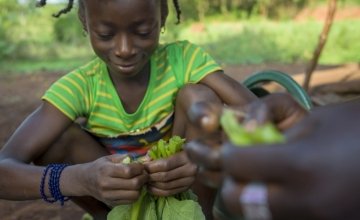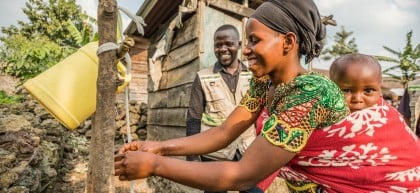
Knowledge Hub
World Hunger Day: Is sustainable progress possible?

Today is World Hunger Day, a date deliberately put in the diary to remind us that despite living in an era of commercial space travel and artificial intelligence, preventable hunger still costs too many lives.
Last year nearly 150 million children had their growth stunted (where their bodies and brains are not properly developed), and another 50 million children were ‘wasted’, which means that they have a low weight for height. Globally, around 821 million people – equivalent to the combined populations of the EU and the USA - suffered from acute hunger. Nor should we forget those here in the UK who struggle to put enough nutritious food on the table for their family.
In 2015, the world’s governments committed to the Sustainable Development Goals, including SDG2, to end global hunger and malnutrition by 2030. Despite big improvements in food security in many countries over the last decades, globally we are off track to meet this goal. SDG2 is critical as it underpins many of the other goals (you won’t get much improvement in people’s health or school performance, without ensuring people have enough nutritious food to eat).
A particular challenge remains in rooting out severe malnutrition in the world’s poorest and most fragile countries, where increasingly the burden of acute hunger falls. Paradoxically our analysis is that many of the countries that need the help most, don’t get it from the international community.

A key challenge in these countries is one of sustainability – the theme of this year’s World Hunger Day. If we look at the Central African Republic, a poor country at the bottom of the Global Hunger Index and Human Development Index, we can start to see the challenge. CAR has been going through a complex and continuous crisis fuelled by conflict and underpinned by extreme poverty since 2013. The primarily rural population are mainly engaged in subsistence farming, but insecurity and conflict has repeatedly forced people like Natalie Wato (pictured above) to flee their homes and farms, leaving them with nothing each time.
Our daily life has been hard after the crisis. It happened when I was pregnant with my sixth child. We fled our home and ran into the bush. That’s where I gave birth. It was difficult to survive. Children were crying because of hunger.
The insecurity makes it difficult to farm crops and animals, driving a drop in overall food production levels, which combined with the impacts of conflict on markets and supply routes, drives an increase in food insecurity.
However, even in places like CAR, with the right support, people can re-establish themselves and Natalie has some hope for the future.
I have received seeds from Concern – squash, beans, groundnut and sesame. I was also given two machetes and a hoe as part of the programme. It has made a big difference. Things have changed.
Of course we’ve talked about some of these challenges before - but the next 15 months present an opportunity for us all to do something about it. In Tokyo next year, world leaders gather for the Nutrition for Growth summit alongside the Olympic Games. This will mark 10 years left to reach the Sustainable Development Goals and end hunger and malnutrition once and for all. That is why more effort, political will and money must be committed by governments at the Tokyo Summit.
The UK Government has a key role to play, as the founder of Nutrition for Growth and a champion of nutrition on the world stage. The UK is on track to meet its own commitments, but must not give up now and risk the gains its contribution has made. We need an ambitious new commitment by the UK Government so that it can lead the way in pulling together a truly international response to end the scandal of hunger once and for all.
Sounds ambitious? It is, but it can be done. Over the course of the next year, Concern will be campaigning to move this issue up the international agenda, and push for ambitious commitments from the UK Government and others. And we’ll need your help to do it.





